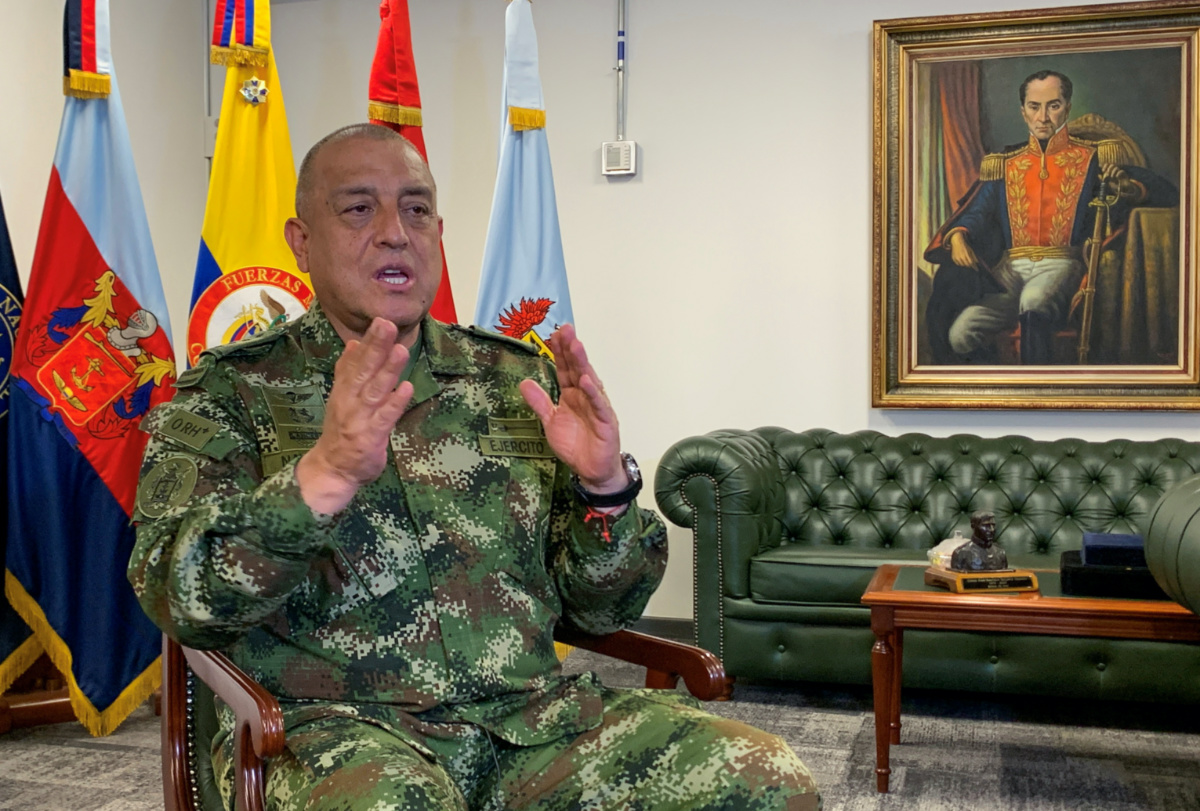Bogota, Colombia
Reuters
About 1,900 fighters belonging to Colombian rebel and crime groups are operating from Venezuela, where they plan attacks and participate in drug trafficking, the commander of Colombia’s armed forces said.
The Colombian Government has long said Venezuela’s leadership grants safe harbour to Colombian armed groups, allowing trafficking of cocaine in exchange for a cut of the profits.

Commander of the Colombian Military Forces, General Luis Fernando Navarro, speaks during an interview with Reuters in Bogota, Colombia, on 29th September. PICTURE: Reuters/Camilo Cohecha.
But it is the first time the military has given a figure for the number it believes are operating from the neighbouring country.
Venezuelan President Nicolas Maduro has denied that Venezuela has provided safe harbor for drug traffickers. But he has expressed sympathy for rebels’ leftist ideology and openly welcomed some guerrilla leaders.
Around half of the 2,350 known combatants from the National Liberation Army (ELN) rebel group are in Venezuela, along with about a third of the 2,400 fighters who belong to dissident groups of former FARC guerrillas who reject a 2016 peace deal, General Luis Fernando Navarro told Reuters late on Wednesday.
“In total in the [Venezuelan] states of Zulia, Tachira, Apure and Amazonas, we calculate there could be between 1,100 and 1,200 criminals from the ELN and some 700 from the FARC dissidents,” Navarro said.
“It’s a factor of instability that the strategic rearguard of these structures is in Venezuelan border states. This obviously makes it difficult to combat them,” said Navarro, accusing the Venezuelan armed forces of not pursuing the groups.
The Venezuelan government did not immediately respond to a request for comment for this story.
Colombia’s internal conflict has stretched for nearly 60 years and led to more than 260,000 deaths.
Though the demobilisation of some 13,000 members of the Revolutionary Armed Forces of Colombia (FARC) under the 2016 accord lead to a reduction in violence, some areas have seen renewed fighting as dissidents, the ELN and crime gangs descended from right-wing paramilitaries battle for territory.
The violence often crosses the border. In Venezuela’s northwestern Zulia state, a local government and a major employer were paying villagers including children to staff narcotics operations, extortion rackets and illegal gold mines, a Reuters report found earlier this year.
Some 80 Venezuelans fight for FARC dissident groups, Navarro said, and some 180 for the ELN.
Commanders from dissident group Segunda Marquetalia, including former peace negotiator Ivan Marquez, Hernan Dario Velasquez and Henry Castellanos are living in Venezuela, he said, as is ELN leader Gustavo Anibal Giraldo, known by his alias Pablito.
The groups attack targets in Colombia and then melt across the border to evade authorities, Navarro said.
One FARC dissident group has taken responsibility for two incidents in June – a car bombing at a military base in the border city of Cucuta which injured dozens, and the shooting of a helicopter carrying President Ivan Duque.






